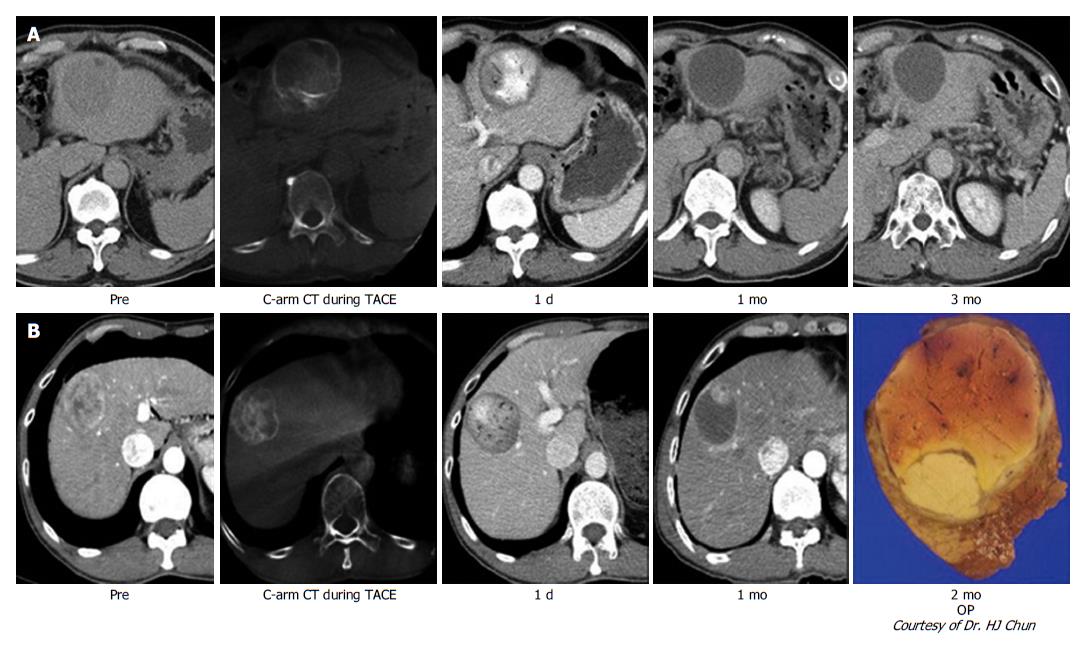Copyright
©The Author(s) 2016.
World J Gastroenterol. Oct 28, 2016; 22(40): 8853-8861
Published online Oct 28, 2016. doi: 10.3748/wjg.v22.i40.8853
Published online Oct 28, 2016. doi: 10.3748/wjg.v22.i40.8853
Figure 1 Typical imaging finding after transarterial chemoembolization with drug-eluting bead.
A: Nodular hepatocellular carcinoma (HCC) with arterial enhancement showed the total necrosis of HCC through follow-up computed tomography (CT) imaging; B: Nodular HCC showed nodular arterial enhancing viable portion within the partial necrosis of HCC in follow-up CT imaging. After operation, viable HCC in resected HCC showed the matched lesion in the CT imaging.
Figure 2 Difference of imaging finding between transarterial chemoembolization with drug-eluting bead and conventional transarterial chemoembolization.
A: Two nodular hepatocellular carcinomas (HCCs) with arterial enhancement showed the total necrosis of HCC in follow-up liver dynamic CT after treating with DC bead; B: Nodular HCC showed nodular arterial enhancing viable portion within the partial necrosis of HCC in follow-up CT after treating with DC bead. After additional conventional transarterial chemoembolization (TACE), incomplete lipiodol uptake in remained HCC showed the matched lesion in the CT imaging. CT: Computed tomography.
Figure 3 Biloma in a patient treated by transarterial chemoembolization with drug-eluting bead.
- Citation: Nam HC, Jang B, Song MJ. Transarterial chemoembolization with drug-eluting beads in hepatocellular carcinoma. World J Gastroenterol 2016; 22(40): 8853-8861
- URL: https://www.wjgnet.com/1007-9327/full/v22/i40/8853.htm
- DOI: https://dx.doi.org/10.3748/wjg.v22.i40.8853















